Email marketing strategy
Just because you can do something doesn’t necessarily mean that you should! It’s an old adage and one many email marketers would do well to consider before embarking on their email marketing strategy.
If we start from what is possible the prospect of drawing up an email marketing strategy, budget, resource and timelines is daunting. I like to start from the other end, not what is possible but what does the business need. It sounds simple and the oft flippant response is more sales but that doesn’t always hold true. So start with a blank canvas and decide your business’s short, medium and long term goals. They may all turn out to be the same – sales, sales and more sales.
If that’s the case your email marketing strategy is a fairly simple one. Build product led emails and send them to everyone on your list as often as you can. Automate basket and browse abandonment, cross sell in sales notifications and dispatch notices. Sounds simple doesn’t it? But in truth this approach, even if your end goal is more sales, tends to be a short term solution. Data apathy, data churn, price marginalisation, stock management, all tend to make this approach, in isolation, one that’s unsustainable long term.
Email drives sales
So what to do, as in truth the ultimate goal of any marketing comes down to sales. We dress it up as brand awareness, customer retention, brand engagement, social media presence – but ultimately all marketing has one goal and that’s to drive long term revenues. So, if we accept that we need to plan our email marketing to fulfil long term revenue targets. This is done using a combination of sales and value-added content which engages the customer as well as sells to them. In essence you need to become the trusted source in the inbox. This has its challenges because marketers have an irrational fear of being seen as spammers. In his book, “Fear and Self-Loathing in Email Marketing”, Dela Quist says: “It is time, for legitimate email marketers – who bend over backwards not to be seen as spammers – to stop feeling so guilty about something they don’t even do”. It really is okay to send an email a day, or even two if you have something new and interesting to say.
In order to understand how best to use email we first need to look at how the long term goal is achieved.
List growth
New customer acquisition, grow the number of people you can realistically sell your products and services to. The more people on your list who look like the other people on your list the better.
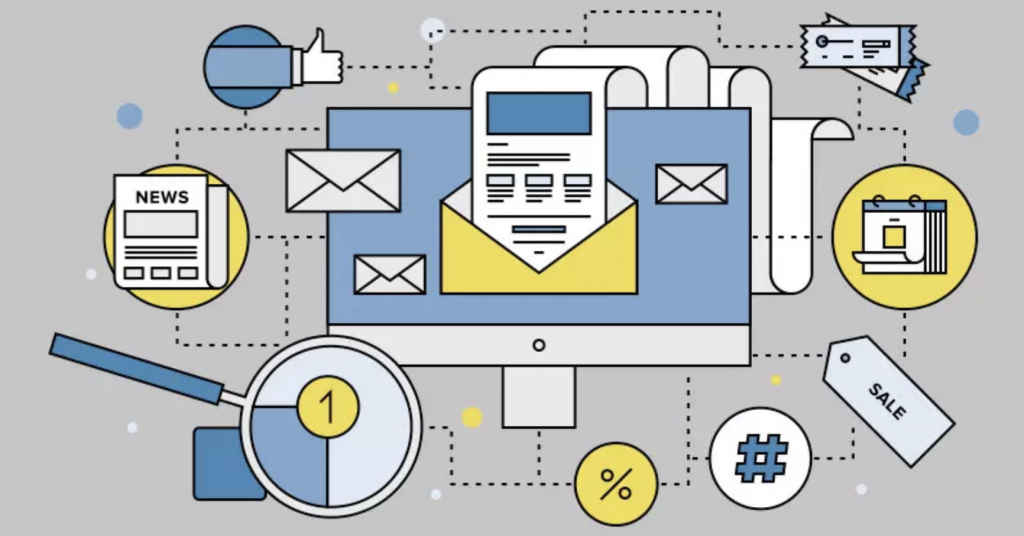
List retention
This is like the silver bullet. Grow your list using customer acquisition tools and reduce the churn in your database. Increase the time someone stays a customer then the return on your initial CPA becomes exponential.
Automation
Automate touchpoints to deliver relevant and timely content. Keep your user engaged, recognise special life events and deliver new purchase user guides/vlogs/updates.
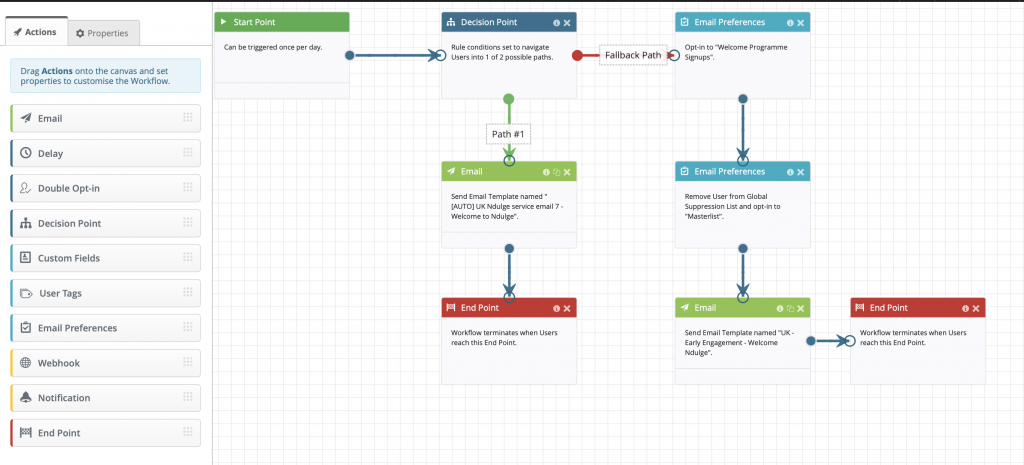
Loyalty and incentive programs
Make your user feel special, make them part of your inner circle.
Targeted communications
Segmentation in the data based on generic product offerings. Utilising the one-to-one marketing tools available to you to customise your one-to-many emails.
One too many sales emails
Don’t be frightened of emailing everyone in your base every time you have something to say. The idea of one-to-one marketing is in truth not achievable because you’re just not sure what I want next. It’s okay to assume I want something I looked at, just don’t assume I don’t want something else as well or instead.
Next, we will look at how we utilise the strategies outlined above to maximise our customer relationship and ultimately drive higher, long term revenues.
Let’s take a look at how you go about implementing some of the ideas mentioned. It’s time to flesh out the opportunities afforded by the medium of email marketing.
List growth
How do you go about growing your list? You can do this in many different ways, each one having their own level of effectiveness. The standard tools available are:
Newsletter sign-ups:
Have a clear and obvious way of letting people sign up for emails, hiding your newsletter sign up at the bottom of the contact page is almost apologetic. You’ve paid for the eyeballs, now try and capture them. Place the sign up somewhere obvious. Also, look at using downstream popups to incentivise sign up.
White paper downloads:
Put your valuable content behind a simple sign up to access a download page. In old fashioned sales you’re always taught to get a name for a name. No difference here, you have valuable content, the price of which is an email address.
Competitions:
Run competitions on your site, and in your existing email encourage people to sign up to be entered. If possible, give away experiential prizes rather than material ones. People are much more likely to enter a money can’t buy competition.
Referrals:
Incentivise your base to refer people like them to sign up for the newsletter or sales emails. Remember, people know people like them, if they enjoy your emails so will some of their friends.
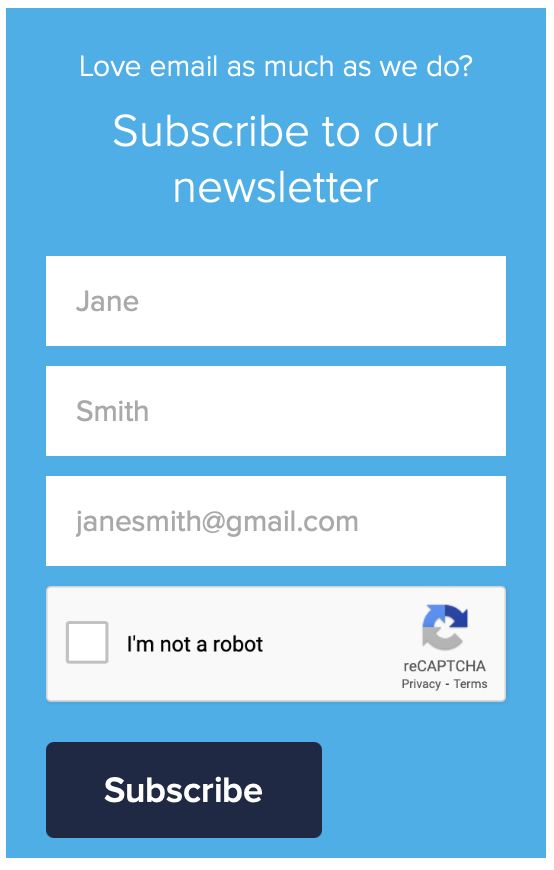
Point of purchase:
Be it on or offline, when someone makes a purchase it is the perfect time to ask permission to market to them via email. Make sure your staff do this routinely if on the phone or face to face in store. Make sure your site has a very obvious sign up tick box available when checking out. If at all possible also advertise text to email gateways in store and incentivise those.
Rented lists:
As long as you manage your expectations, renting lists can still be an effective way of building your database.
List retention
List retention for me is the silver bullet, if you can reduce your churn while at the same time growing your list you should be looking at exponential growth in revenues. Email on Acid believe in a “70/20/10” rule for brand emails. This means 70% of emails should be educational demos, tips, storytelling or advisory information. 20% should “centre on content from thought leaders, creating a feeling across your list that your brand is giving them exclusive access to content” and the remaining 10% should be product-focused. This rule is said to establish valuable relationships with your customers making them feel important, which they are! The more important they feel, the more engaged with the brand they will be.
Automation
Take some of the workload away and automate as many of your emails as possible. There are many tools available to help you collect site side data, send an API call to your email platform and subsequently trigger a timely email reminder. These types of communication tend to have the greatest open and click rates and the highest ROI.
The sort of things you can try are…
Welcome/acquisition:
Welcome programs work best when they come as a series of emails which lead the recipient down various paths of action dependent on whether they open and click a particular email or take a specific site side action.
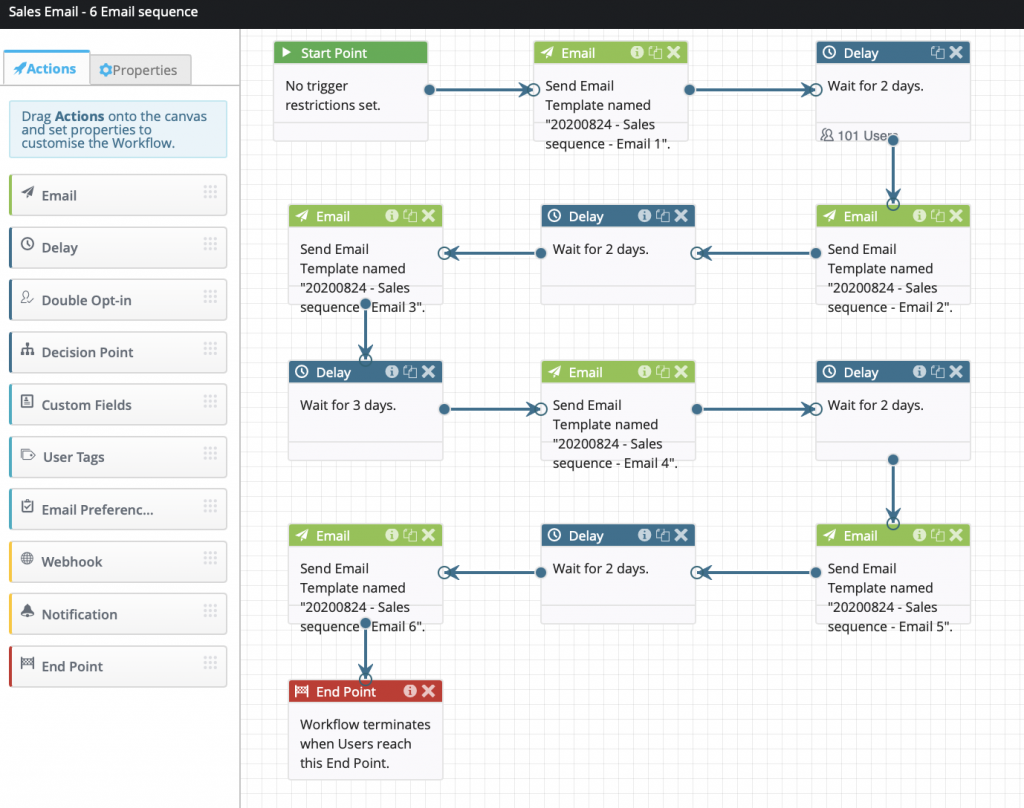
Basket abandonment:
Someone has put a product in their basket on your site but not completed the purchase in a timely fashion. Post that data to your email automation tool, most of those on the market (ours included) can handle this easily. This data will then populate a predefined template and trigger an email to the recipient encouraging them to complete their purchase. Fresh Relevance in their Rip Curl case study show in excess of 10% of those customers receiving a basket abandonment email go back to purchase the item.
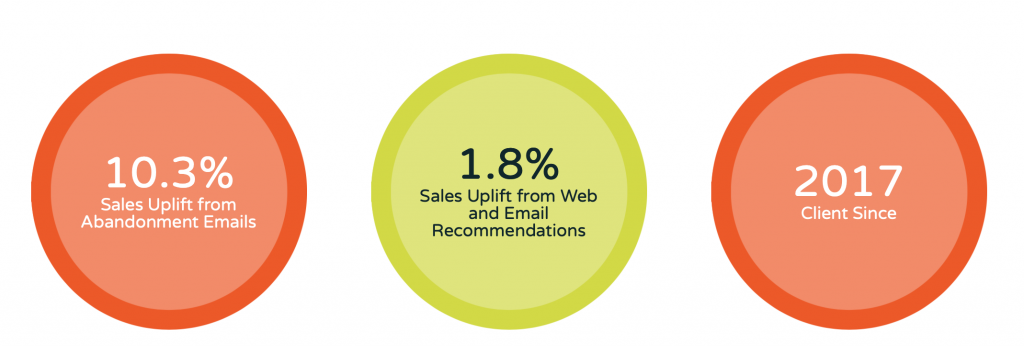
Browse abandonment:
Almost identical to Basket Abandonment, Browse Abandonment happens when you implement business rules such as “identified email address has viewed a product 3+ times without going further, trigger this template with this personalisation in it”. These type of emails are seen to generate in excess of 3% increase in sales.
Event led:
Birthdays, anniversaries, insurance renewals, these type of emails just sit there in the background and trigger daily depending on when someone matches the criteria. This is a simple but effective way of increasing your brand loyalty and triggering clicks back to your site. In their birthday email, Audit Experian said birthday emails out perform promotional emails in nearly all KPIs
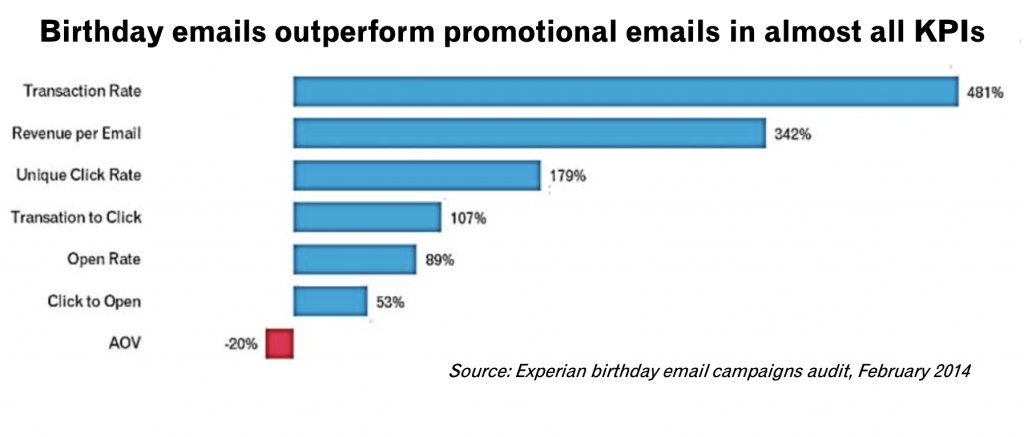
Cross Sell:
Not only should you cross sell in your order confirmation emails but also dispatch notifications, delivery confirmation and in truth, any other order point of contact. Forrester Research found a 10% increase in AOV on purchases where a recommendation was clicked on.
I am just scratching the surface of what’s possible with automation, essentially, if you can whiteboard the process we can implement an automation program that will sit in the background and increase your revenues from email.
Loyalty and Incentive programs:
This is just an extension of the Nectar, Clubcard, MyWaitrose (other loyalty cards are available) card you have in your wallet but in an online format. Richer Sounds do this very well at point of sign up. You’re encouraged to be a VIP and you’re told what you’ll get by becoming one. It helps with both list growth and list retention.
Targeted communications:
Your email platform will almost certainly have the functionality to segment based on any data held within your database. You can then send targeted communications to people based on the products they’ve previously bought, those they’ve browsed, those that compliment previously purchased products, the list is almost endless. You can do many different targeted emails or if you can code using the dynamic tags, or outsource that bit to an agency like us, you can build one email that dynamically inserts the relevant targeted element based on the data. It is also possible to use some of the personalisation tools out there to scrape in particular offers from your website in real time and drop them into the dynamic personalised section of the email.
The takeaway
The possibilities and the opportunities afforded to you by utilising the tools available and the skills of a professional email marketing company can have a material effect on your bottom line. It is no coincidence that the companies who have fared better in the current pandemic are the ones whose online presence and email marketing programs are constantly pushing the boundaries, whereas the ones that have struggled were slower to embrace the opportunities afforded them by the technologies available.


